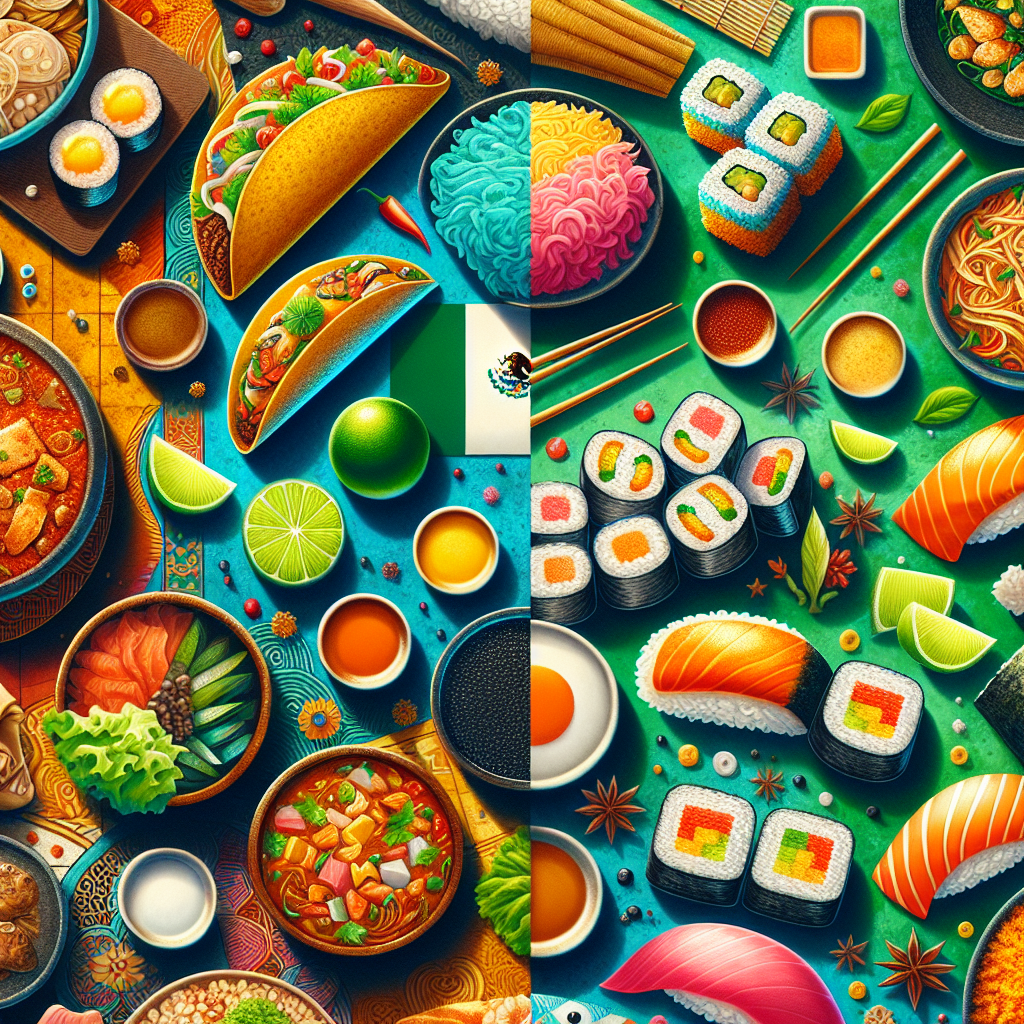Introduction to Mexico and JapanIn the ever-evolving landscape of cultural exchange, the discussion of Mexico vs Japan presents a unique opportunity to explore two vastly different yet intriguingly similar cultures. Both nations boast rich histories, vibrant traditions, and an array of culinary delights that have captured the hearts and palates of people around the world. This article aims to delve deeper into the cultural nuances, traditional practices, and, of course, the culinary scenes that define each country.Historical BackgroundMexico’s history is a tapestry woven from the ancient civilizations of the Aztecs and Mayans, followed by Spanish colonization, which has greatly influenced its modern culture. The rich tapestry of traditions, art, and language reflects this complex past, showcasing an identity that is both indigenous and colonial. Conversely, Japan’s history is marked by its periods of isolation and openness to the world, the influence of Buddhism and Shintoism, and the samurai culture, which has shaped its values and social structures. When examining Mexico vs Japan, it is essential to consider how these historical contexts inform the present cultures. Mexico’s vibrant festivals, such as Día de los Muertos, represent an embrace of life and death, while Japan’s cherry blossom festivals symbolize the transient beauty of life. These events bring communities together and serve as focal points for cultural expression.Cultural Practices and Social NormsCulturally, Mexico is known for its warmth and communal lifestyle, where family plays a crucial role in everyday life. Gatherings often revolve around food, music, and dance, with traditions passed down through generations. In contrast, Japanese culture emphasizes harmony, respect, and meticulous attention to detail. This is evident in their art forms, such as tea ceremonies, where every movement is intentional and serves a greater purpose.The differences in social norms between Mexico vs Japan are also striking. In Mexico, personal relationships often come first, leading to a more relaxed approach towards time—something the locals might call “manana culture.” In Japan, punctuality is of utmost importance, symbolizing respect for others.Culinary TraditionsFood is a key element in exploring Mexico vs Japan. Mexican cuisine, recognized by UNESCO as an Intangible Cultural Heritage, includes flavors that burst from every dish, emphasizing corn, beans, and chili peppers. These ingredients form the basis of iconic dishes like tacos, tamales, and mole. Mexican food is celebratory, often enjoyed in a communal setting, where the act of sharing food strengthens bonds between people.In stark contrast, Japanese cuisine is focused on freshness, seasonality, and presentation. It features rice as a staple, complemented by fish, vegetables, and fermented products. Sushi and sashimi exemplify the precision and artistry inherent in Japanese culinary practices, where every dish is a work of art designed to appeal to multiple senses.Comparative AnalysisWhen placing Mexico and Japan side by side, their culinary landscapes reveal more than just the differences; they reflect their cultural identities. While Mexican cuisine invites communal enjoyment, Japanese dining emphasizes individual experience, with courses meticulously curated to tell a story. Both cuisines, however, use similar fundamental techniques, such as fermenting and grilling.The Role of GlobalizationIn recent years, the world has witnessed a fusion of these two culinary worlds, with Mexican and Japanese eateries thriving in cities worldwide. The emergence of sushi burritos and kimchi tacos illustrates how globalization can lead to innovative food experiences, merging elements from both cultures into novel gastronomic offerings that appeal to adventurous eaters.ConclusionIn conclusion, the Mexico vs Japan dialogue showcases a fascinating blend of history, culture, and culinary artistry. While their practices may differ, the underlying principles of community, respect, and the joy of sharing food are ever-present in both cultures. As the world continues to evolve, so too will the relationships we build across borders, celebrating diversity through understanding and appreciation of cultural nuances.











